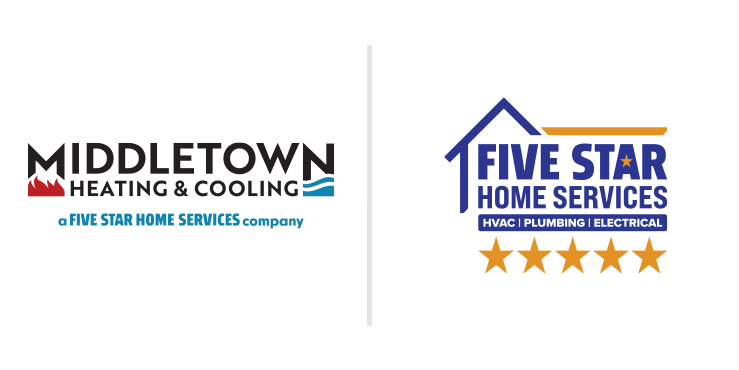Did you know that March 19th marks the beginning of spring this year? While spring brings warmer weather and beautiful flowers, it also brings seasonal allergies for many Ohio residents. These allergies can lead to multiple uncomfortable symptoms, which are all commonly known as hay fever. So, if you’re one of the folks dealing with allergies in Ohio, we’ve got some practical solutions from Middletown Heating & Cooling to help you combat those pesky allergens in your home this season.
Think About the Symptoms of Hay Fever
Hay fever, or allergic rhinitis, is like the most common allergy in Ohio. It happens when your body’s immune system goes a little overboard with allergens like pollen, making histamines that cause allergy symptoms. These symptoms can be mild or extreme and can stick around for weeks or even months.
Here are a few typical hay fever symptoms:
· Sneezing
· Runny or stuffy nose
· Itchy eyes, mouth, throat, or skin
· Ear congestion
· Postnasal drip
If you’re dealing with these symptoms on the regular during spring and summer, chances are it’s hay fever caused by allergens in Ohio.
Think About Why Ohio’s Landscape Causes Allergies
Before we dive into the whole allergens thing, let’s take a moment to understand why Ohio seems to have crazy high pollen and allergy levels. So, Ohio’s got a little bit of everything – cities, farms, forests, lakes, and rivers. And guess what? Each of these places has different plants and trees that love to release pollen. With such a diverse landscape, it’s no wonder allergies go haywire here. We’ve got pollen flying around from February all the way to November, making for one long allergy season.
Think About the Kinds of Allergens in Ohio
Some examples of these (but not limited to) are:
· Tree Pollen: Did you know that pollen from trees like oak, maple, birch, cedar, pine, and hickory can trigger allergies, especially in the spring?
· Grass Pollen: Grasses such as Kentucky bluegrass, timothy grass, and Bermuda grass release pollen, causing allergies, particularly in late spring and early summer.
· Weed Pollen: Ragweed is another major weed in Ohio that produces tons of pollen in late summer and early fall, giving allergies to many folks.
· Mold Spores: Mold spores are a pretty common allergen in Ohio. Mold can grow on decaying vegetation, leaves, and other organic stuff.


Interesting Fact: Did you know that hay fever impacts around 1 in 5 people during their lifetime?
Think About Tackling Allergens with Home Solutions
While it’s hard to completely prevent allergies, there are some practical solutions you can try at home to minimize the impact of allergens.
1. Keep your windows closed during peak pollen season (usually spring and summer).
2. Vacuum regularly with a HEPA filter to zap allergens from your carpets and furniture.
3. Wash your bedding and curtains often in hot water to get rid of pollen and other allergens.
4. Hop in the shower right after coming in from outside to wash off any pollen or allergens sticking to you.
5. Dust frequently, especially on bookshelves and dusty surfaces in hard-to-reach spaces.
6. Don’t forget to change your air filters regularly to keep allergens from floating around your home. Every 1-2 months is a good rule of thumb.
Think About Tackling Allergens with Professional Solutions
When it comes to finding relief, incorporating practical home solutions into your daily life is the way to go. On the other hand, sometimes (depending on your situation), you will need to explore professional solutions or services. Here are a few suggestions you might want to check out:
Utilize a Whole-home Purifier – If you have ever considered using a whole-home air purifier, consider getting the iWave. It is a whole-home air purification system that can be easily installed in your HVAC system to constantly clean and purify the air in your home. It uses advanced ionization technology to help reduce allergens, bacteria, viruses, and other particles that can cause allergies and respiratory problems. So, breathe easy and enjoy fresh, clean air!
Use a Whole-home Dehumidifier – High humidity levels can be a breeding ground for allergens like mildew and mold. To counter this, installing a whole-home dehumidifier can help reduce moisture in your home, making it less ideal for unwanted allergens and harmful bacteria to thrive in.
Get A Smart Thermostat – A smart thermostat can actually help you control the humidity levels in your home, which means less mold and dust mites. Plus, you can schedule temperature changes and control your HVAC system from anywhere! It’s super convenient and keeps your home comfy and allergen-free.
Schedule a Ductwork Cleaning – Did you know that indoor air can be up to five times more polluted than outdoor air? Allergens like pollen, dust mites, and mold spores can get stuck in your home’s ductwork, making it a breeding ground for poor air quality. But here’s the good news: getting your air ducts professionally cleaned can make a big difference! Not only will it improve the overall air quality in your home, but it can also help reduce those pesky allergy symptoms. The best part? You only need to get this service done every three to five years. So why wait? Take a breath of fresh air!
Like any of these options? Just give us a call, and we’ll chat about what’s the best fit for you, your family, and your home!
Allergies are a common issue for many people. But we’ve got some practical solutions to help reduce their impact on your daily life. By understanding the causes and symptoms of allergies and trying out a mix of home and professional remedies, you can actually enjoy spring without constant suffering. So, why not take control of your allergies today? Feel free to give us a call for all your HVAC air quality needs. We’ve got you covered!
Count on Middletown Heating & Cooling for anything HVAC-related! Call us today at (513) 268-3789, or schedule an appointment online now by clicking here!





